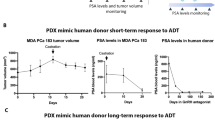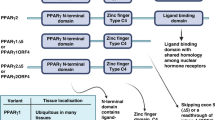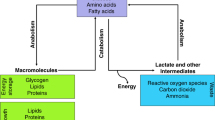Abstract
Prostate cancer is the most commonly diagnosed malignancy among men in industrialized countries, accounting for the second leading cause of cancer-related deaths. Although we now know that the androgen receptor (AR) is important for progression to the deadly advanced stages of the disease, it is poorly understood what AR-regulated processes drive this pathology. Here we demonstrate that AR regulates prostate cancer cell growth via the metabolic sensor 5′-AMP-activated protein kinase (AMPK), a kinase that classically regulates cellular energy homeostasis. In patients, activation of AMPK correlated with prostate cancer progression. Using a combination of radiolabeled assays and emerging metabolomic approaches, we also show that prostate cancer cells respond to androgen treatment by increasing not only rates of glycolysis, as is commonly seen in many cancers, but also glucose and fatty acid oxidation. Importantly, this effect was dependent on androgen-mediated AMPK activity. Our results further indicate that the AMPK-mediated metabolic changes increased intracellular ATP levels and peroxisome proliferator-activated receptor gamma coactivator 1-alpha (PGC-1α)-mediated mitochondrial biogenesis, affording distinct growth advantages to the prostate cancer cells. Correspondingly, we used outlier analysis to determine that PGC-1α is overexpressed in a subpopulation of clinical cancer samples. This was in contrast to what was observed in immortalized benign human prostate cells and a testosterone-induced rat model of benign prostatic hyperplasia. Taken together, our findings converge to demonstrate that androgens can co-opt the AMPK-PGC-1α signaling cascade, a known homeostatic mechanism, to increase prostate cancer cell growth. The current study points to the potential utility of developing metabolic-targeted therapies directed toward the AMPK-PGC-1α signaling axis for the treatment of prostate cancer.
This is a preview of subscription content, access via your institution
Access options
Subscribe to this journal
Receive 50 print issues and online access
$259.00 per year
only $5.18 per issue
Buy this article
- Purchase on Springer Link
- Instant access to full article PDF
Prices may be subject to local taxes which are calculated during checkout








Similar content being viewed by others
References
Warburg O . On the origin of cancer cells. Science 1956; 123: 309–314.
Hanahan D, Weinberg RA . Hallmarks of cancer: the next generation. Cell 2011; 144: 646–674.
Ertel A, Tsirigos A, Whitaker-Menezes D, Birbe RC, Pavlides S, Martinez-Outschoorn UE et al. Is cancer a metabolic rebellion against host aging? In the quest for immortality, tumor cells try to save themselves by boosting mitochondrial metabolism. Cell Cycle 2012; 11: 253–263.
DeBerardinis RJ, Lum JJ, Hatzivassiliou G, Thompson CB . The biology of cancer: metabolic reprogramming fuels cell growth and proliferation. Cell Metab 2008; 7: 11–20.
Dakubo GD, Parr RL, Costello LC, Franklin RB, Thayer RE . Altered metabolism and mitochondrial genome in prostate cancer. J Clin Pathol 2006; 59: 10–16.
Costello LC, Franklin RB, Feng P . Mitochondrial function, zinc, and intermediary metabolism relationships in normal prostate and prostate cancer. Mitochondrion 2005; 5: 143–153.
Bhalla K, Hwang BJ, Dewi RE, Ou L, Twaddel W, Fang HB et al. PGC1alpha promotes tumor growth by inducing gene expression programs supporting lipogenesis. Cancer Res 2011; 71: 6888–6898.
Skrtic M, Sriskanthadevan S, Jhas B, Gebbia M, Wang X, Wang Z et al. Inhibition of mitochondrial translation as a therapeutic strategy for human acute myeloid leukemia. Cancer Cell 2011; 20: 674–688.
Guo JY, Chen HY, Mathew R, Fan J, Strohecker AM, Karsli-Uzunbas G et al. Activated Ras requires autophagy to maintain oxidative metabolism and tumorigenesis. Genes Dev 2011; 25: 460–470.
Xiao D, Powolny AA, Moura MB, Kelley EE, Bommareddy A, Kim SH et al. Phenethyl isothiocyanate inhibits oxidative phosphorylation to trigger reactive oxygen species-mediated death of human prostate cancer cells. J Biol Chem 2010; 285: 26558–26569.
Chang CY, Kazmin D, Jasper JS, Kunder R, Zuercher WJ, McDonnell DP . The metabolic regulator ERRalpha, a downstream target of HER2/IGF-1R, as a therapeutic target in breast cancer. Cancer Cell 2011; 20: 500–510.
Cormio A, Guerra F, Cormio G, Pesce V, Fracasso F, Loizzi V et al. The PGC-1alpha-dependent pathway of mitochondrial biogenesis is upregulated in type I endometrial cancer. Biochem Biophys Res Commun 2009; 390: 1182–1185.
Hu J, Hwang SS, Liesa M, Gan B, Sahin E, Jaskelioff M et al. Antitelomerase therapy provokes ALT and mitochondrial adaptive mechanisms in cancer. Cell 2012; 148: 651–663.
Ramanathan A, Wang C, Schreiber SL . Perturbational profiling of a cell-line model of tumorigenesis by using metabolic measurements. Proc Natl Acad Sci USA 2005; 102: 5992–5997.
Stoss O, Werther M, Zielinski D, Middel P, Jost N, Ruschoff J et al. Transcriptional profiling of transurethral resection samples provides insight into molecular mechanisms of hormone refractory prostate cancer. Prostate Cancer Prostatic Dis 2008; 11: 166–172.
Whitaker-Menezes D, Martinez-Outschoorn UE, Flomenberg N, Birbe RC, Witkiewicz AK, Howell A et al. Hyperactivation of oxidative mitochondrial metabolism in epithelial cancer cells in situ: visualizing the therapeutic effects of metformin in tumor tissue. Cell Cycle 2011; 10: 4047–4064.
Yang S, Wang X, Contino G, Liesa M, Sahin E, Ying H et al. Pancreatic cancers require autophagy for tumor growth. Genes Dev 2011; 25: 717–729.
Oyama N, Miller TR, Dehdashti F, Siegel BA, Fischer KC, Michalski JM et al. 11C-acetate PET imaging of prostate cancer: detection of recurrent disease at PSA relapse. J Nucl Med 2003; 44: 549–555.
Hofer C, Laubenbacher C, Block T, Breul J, Hartung R, Schwaiger M . Fluorine-18-fluorodeoxyglucose positron emission tomography is useless for the detection of local recurrence after radical prostatectomy. Eur Urol 1999; 36: 31–35.
Pillarsetty N, Punzalan B, Larson SM . 2-18F-Fluoropropionic acid as a PET imaging agent for prostate cancer. J Nucl Med 2009; 50: 1709–1714.
Yu EY, Muzi M, Hackenbracht JA, Rezvani BB, Link JM, Montgomery RB et al. C11-acetate and F-18 FDG PET for men with prostate cancer bone metastases: relative findings and response to therapy. Clin Nucl Med 2011; 36: 192–198.
Taylor BS, Schultz N, Hieronymus H, Gopalan A, Xiao Y, Carver BS et al. Integrative genomic profiling of human prostate cancer. Cancer Cell 2010; 18: 11–22.
Knudsen KE, Scher HI . Starving the addiction: new opportunities for durable suppression of AR signaling in prostate cancer. Clin Cancer Res 2009; 15: 4792–4798.
Chen CD, Welsbie DS, Tran C, Baek SH, Chen R, Vessella R et al. Molecular determinants of resistance to antiandrogen therapy. Nat Med 2004; 10: 33–39.
Frigo DE, Howe MK, Wittmann BM, Brunner AM, Cushman I, Wang Q et al. CaM kinase kinase beta-mediated activation of the growth regulatory kinase AMPK is required for androgen-dependent migration of prostate cancer cells. Cancer Res 2011; 71: 528–537.
Karacosta LG, Foster BA, Azabdaftari G, Feliciano DM, Edelman AM . A regulatory feedback loop between Ca2+/calmodulin-dependent protein kinase kinase 2 (CaMKK2) and the androgen receptor in prostate cancer progression. J Biol Chem 2012; 287: 24832–24843.
Massie CE, Lynch A, Ramos-Montoya A, Boren J, Stark R, Fazli L et al. The androgen receptor fuels prostate cancer by regulating central metabolism and biosynthesis. Embo J 2011; 30: 2719–2733.
Park HU, Suy S, Danner M, Dailey V, Zhang Y, Li H et al. AMP-activated protein kinase promotes human prostate cancer cell growth and survival. Mol Cancer Ther 2009; 8: 733–741.
Jung SN, Park IJ, Kim MJ, Kang I, Choe W, Kim SS et al. Down-regulation of AMP-activated protein kinase sensitizes DU145 carcinoma to Fas-induced apoptosis via c-FLIP degradation. Exp Cell Res 2009; 315: 2433–2441.
Jeon SM, Chandel NS, Hay N . AMPK regulates NADPH homeostasis to promote tumour cell survival during energy stress. Nature 2012; 485: 661–665.
Laderoute KR, Amin K, Calaoagan JM, Knapp M, Le T, Orduna J et al. 5′-AMP-activated protein kinase (AMPK) is induced by low-oxygen and glucose deprivation conditions found in solid-tumor microenvironments. Mol Cell Biol 2006; 26: 5336–5347.
Wang J, Cai Y, Shao LJ, Siddiqui J, Palanisamy N, Li R et al. Activation of NF-{kappa}B by TMPRSS2/ERG fusion isoforms through toll-like receptor-4. Cancer Res 2011; 71: 1325–1333.
Agoulnik IU, Vaid A, Bingman WE 3rd, Erdeme H, Frolov A, Smith CL et al. Role of SRC-1 in the promotion of prostate cancer cell growth and tumor progression. Cancer Res 2005; 65: 7959–7967.
Hodgson MC, Shao LJ, Frolov A, Li R, Peterson LE, Ayala G et al. Decreased expression and androgen regulation of the tumor suppressor gene INPP4B in prostate cancer. Cancer Res 2011; 71: 572–582.
Moon JS, Jin WJ, Kwak JH, Kim HJ, Yun MJ, Kim JW et al. Androgen stimulates glycolysis for de novo lipid synthesis by increasing the activities of hexokinase 2 and 6-phosphofructo-2-kinase/fructose-2,6-bisphosphatase 2 in prostate cancer cells. Biochem J 2011; 433: 225–233.
Liu Y, Zuckier LS, Ghesani NV . Dominant uptake of fatty acid over glucose by prostate cells: a potential new diagnostic and therapeutic approach. Anticancer Res 2010; 30: 369–374.
Zha S, Ferdinandusse S, Hicks JL, Denis S, Dunn TA, Wanders RJ et al. Peroxisomal branched chain fatty acid beta-oxidation pathway is upregulated in prostate cancer. Prostate 2005; 63: 316–323.
Liu Y . Fatty acid oxidation is a dominant bioenergetic pathway in prostate cancer. Prostate Cancer Prostatic Dis 2006; 9: 230–234.
Sreekumar A, Poisson LM, Rajendiran TM, Khan AP, Cao Q, Yu J et al. Metabolomic profiles delineate potential role for sarcosine in prostate cancer progression. Nature 2009; 457: 910–914.
Jager S, Handschin C, St-Pierre J, Spiegelman BM . AMP-activated protein kinase (AMPK) action in skeletal muscle via direct phosphorylation of PGC-1alpha. Proc Natl Acad Sci USA 2007; 104: 12017–12022.
Berger R, Febbo PG, Majumder PK, Zhao JJ, Mukherjee S, Signoretti S et al. Androgen-induced differentiation and tumorigenicity of human prostate epithelial cells. Cancer Res 2004; 64: 8867–8875.
Rick FG, Schally AV, Block NL, Halmos G, Perez R, Fernandez JB et al. LHRH antagonist Cetrorelix reduces prostate size and gene expression of proinflammatory cytokines and growth factors in a rat model of benign prostatic hyperplasia. Prostate 2011; 71: 736–747.
Rick FG, Schally AV, Block NL, Nadji M, Szepeshazi K, Zarandi M et al. Antagonists of growth hormone-releasing hormone (GHRH) reduce prostate size in experimental benign prostatic hyperplasia. Proc Natl Acad Sci USA 2011; 108: 3755–3760.
Wang S, Gao J, Lei Q, Rozengurt N, Pritchard C, Jiao J et al. Prostate-specific deletion of the murine Pten tumor suppressor gene leads to metastatic prostate cancer. Cancer Cell 2003; 4: 209–221.
Ellwood-Yen K, Graeber TG, Wongvipat J, Iruela-Arispe ML, Zhang J, Matusik R et al. Myc-driven murine prostate cancer shares molecular features with human prostate tumors. Cancer Cell 2003; 4: 223–238.
Varambally S, Yu J, Laxman B, Rhodes DR, Mehra R, Tomlins SA et al. Integrative genomic and proteomic analysis of prostate cancer reveals signatures of metastatic progression. Cancer Cell 2005; 8: 393–406.
Arredouani MS, Lu B, Bhasin M, Eljanne M, Yue W, Mosquera JM et al. Identification of the transcription factor single-minded homologue 2 as a potential biomarker and immunotherapy target in prostate cancer. Clin Cancer Res 2009; 15: 5794–5802.
Chandran UR, Ma C, Dhir R, Bisceglia M, Lyons-Weiler M, Liang W et al. Gene expression profiles of prostate cancer reveal involvement of multiple molecular pathways in the metastatic process. BMC Cancer 2007; 7: 64.
Liu P, Ramachandran S, Ali Seyed M, Scharer CD, Laycock N, Dalton WB et al. Sex-determining region Y box 4 is a transforming oncogene in human prostate cancer cells. Cancer Res 2006; 66: 4011–4019.
Tamura K, Furihata M, Tsunoda T, Ashida S, Takata R, Obara W et al. Molecular features of hormone-refractory prostate cancer cells by genome-wide gene expression profiles. Cancer Res 2007; 67: 5117–5125.
Ward PS, Thompson CB . Metabolic reprogramming: a cancer hallmark even warburg did not anticipate. Cancer Cell 2012; 21: 297–308.
Shiota M, Yokomizo A, Tada Y, Inokuchi J, Tatsugami K, Kuroiwa K et al. Peroxisome proliferator-activated receptor gamma coactivator-1alpha interacts with the androgen receptor (AR) and promotes prostate cancer cell growth by activating the AR. Mol Endocrinol 2010; 24: 114–127.
Marin-Valencia I, Yang C, Mashimo T, Cho S, Baek H, Yang XL et al. Analysis of tumor metabolism reveals mitochondrial glucose oxidation in genetically diverse human glioblastomas in the mouse brain in vivo. Cell Metab 2012; 15: 827–837.
Sahin E, Colla S, Liesa M, Moslehi J, Muller FL, Guo M et al. Telomere dysfunction induces metabolic and mitochondrial compromise. Nature 2011; 470: 359–365.
Ding Z, Wu CJ, Jaskelioff M, Ivanova E, Kost-Alimova M, Protopopov A et al. Telomerase reactivation following telomere dysfunction yields murine prostate tumors with bone metastases. Cell 2012; 148: 896–907.
O'Mahony F, Razandi M, Pedram A, Harvey BJ, Levin ER . Estrogen modulates metabolic pathway adaptation to available glucose in breast cancer cells. Mol Endocrinol 2012; 26: 2058–2070.
Xiang X, Saha AK, Wen R, Ruderman NB, Luo Z . AMP-activated protein kinase activators can inhibit the growth of prostate cancer cells by multiple mechanisms. Biochem Biophys Res Commun 2004; 321: 161–167.
Irrcher I, Ljubicic V, Kirwan AF, Hood DA . AMP-activated protein kinase-regulated activation of the PGC-1alpha promoter in skeletal muscle cells. PLoS One 2008; 3: e3614.
Klimcakova E, Chenard V, McGuirk S, Germain D, Avizonis D, Muller WJ et al. PGC-1alpha promotes the growth of ErbB2/Neu-induced mammary tumors by regulating nutrient supply. Cancer Res 2012; 72: 1538–1546.
Koves TR, Ussher JR, Noland RC, Slentz D, Mosedale M, Ilkayeva O et al. Mitochondrial overload and incomplete fatty acid oxidation contribute to skeletal muscle insulin resistance. Cell Metab 2008; 7: 45–56.
Jin C, McKeehan K, Wang F . Transgenic mouse with high Cre recombinase activity in all prostate lobes, seminal vesicle, and ductus deferens. Prostate 2003; 57: 160–164.
Zhang B, Chen H, Zhang L, Dakhova O, Zhang Y, Lewis MT et al. A dosage-dependent pleiotropic role of Dicer in prostate cancer growth and metastasis. Oncogene (e-pub ahead of print 15 July 2013; doi:10.1038/onc.2013.281).
Acknowledgements
We thank members of the Frigo Laboratory for technical advice, helpful suggestions and critical comments on this study and manuscript. We also thank Paul Landry for his assistance with Amira and mitochondrial volume measurements, the Duke University Department of Pathology’s Electron Microscopy Core for help with transmission electron microscopy; Drs Dean Tang, Geoffrey Girnun and Thomas Westbrook for generously providing the LAPC9-derived tumors, shPGC-1α constructs and pINDUCER22, respectively; Drs Timothy Koves and Pradip Saha for their advice on the CO2 trap assays; Dr Christopher Newgard for help with the metabolomics; and Drs Sean McGuire and Kevin Phillips for critically reading this manuscript. This work was supported by NIH grants K01DK084205 (DEF), P30EY007551 (ARB), R00CA125937 (LX), P30CA125123 (Dan L Duncan Cancer Center Human Tissue Acquisition and Pathology Core), DoD/PCRP grant W81XWH-12-1-0204 (DEF), CPRIT grant RP110005 (LX) and grants from the Texas Emerging Technology Fund, the Golfers Against Cancer (DEF), the Urology Care Foundation Research Scholars Program and AUA Southeastern Section (FGR).
Author information
Authors and Affiliations
Corresponding author
Ethics declarations
Competing interests
The authors declare no conflict of interest.
Additional information
Supplementary Information accompanies this paper on the Oncogene website
Supplementary information
Rights and permissions
About this article
Cite this article
Tennakoon, J., Shi, Y., Han, J. et al. Androgens regulate prostate cancer cell growth via an AMPK-PGC-1α-mediated metabolic switch. Oncogene 33, 5251–5261 (2014). https://doi.org/10.1038/onc.2013.463
Received:
Revised:
Accepted:
Published:
Issue Date:
DOI: https://doi.org/10.1038/onc.2013.463
Keywords
This article is cited by
-
Preclinical models of prostate cancer — modelling androgen dependency and castration resistance in vitro, ex vivo and in vivo
Nature Reviews Urology (2023)
-
Dynamic interplay between sortilin and syndecan-1 contributes to prostate cancer progression
Scientific Reports (2023)
-
Regulation and role of CAMKK2 in prostate cancer
Nature Reviews Urology (2022)
-
PGC1 alpha coactivates ERG fusion to drive antioxidant target genes under metabolic stress
Communications Biology (2022)
-
Nandrolone Supplementation Promotes AMPK Activation and Divergent 18[FDG] PET Brain Connectivity in Adult and Aged Mice
Neurochemical Research (2022)



